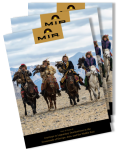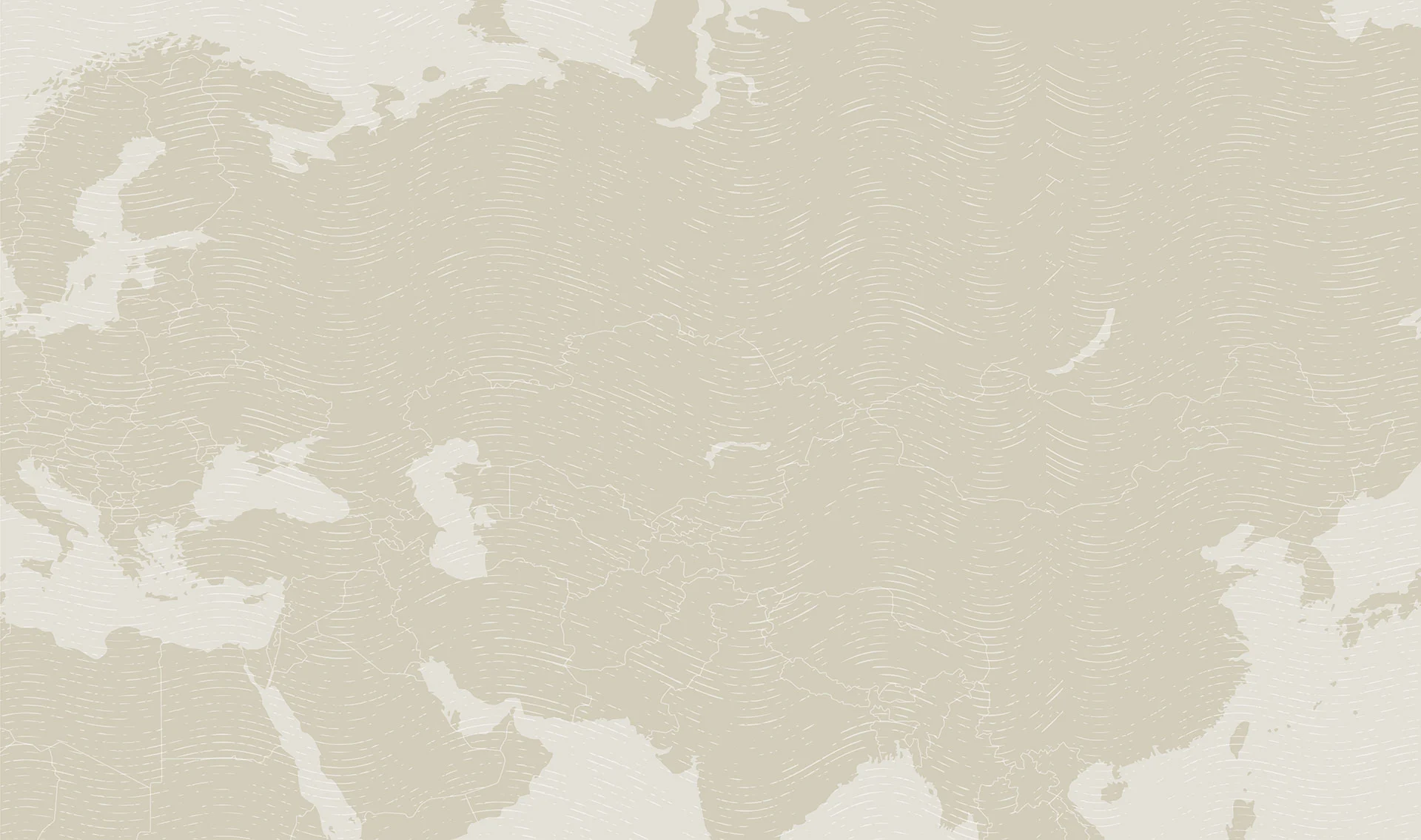Treasures of the South Caucasus
Photo credit: Peter Guttman
Classic Survey of Azerbaijan, Georgia & Armenia
Overview
The countries of the South Caucasus sit at the crossroads of Europe and Asia, and with this itinerary you experience the best of both worlds, in more ways than one. Each of the capital cities – Baku, Tbilisi, and Yerevan – is its own mix of old narrow streets, striking modern architecture, and cosmopolitan energy. Outside of the cities, the deep roots of tradition hold strong, evident in everything from hand-loomed Azerbaijani carpets to ancient Georgian wine-making techniques. Throw in fascinating, often novel medieval architecture, gorgeous mountain scenery, and a heartfelt dedication to hospitality, and you’ve got the makings of a wonderful adventure.
Travels to: Armenia, Azerbaijan, Georgia

Map

Itinerary
-
Days 1-5: Baku (Azerbaijan), Gobustan, Shemakha, Sheki

The journey begins in Baku, Azerbaijan’s capital and a bustling business center for the Caspian oil industry. Wander the narrow stone streets of the UNESCO-listed medieval Old Town, stroll modern Fountain Square, and admire the dramatically lit Flame Towers skyscrapers. Make a visit to the UNESCO-listed petroglyphs of Gobustan, and on the following days travel to the towns of Shemahka, former capital of the Shirvan Khanate and home to Azerbaijan’s largest mosque, and Sheki, where the historic center and Khan’s Palace are UNESCO World Heritage sites.
HIGHLIGHTS
- The winding streets, mosques, and tiny shops of Baku’s walled Old Town
- The swooping architecture of Baku’s Heydar Aliyev Cultural Center, designed by famed Iraqi-British architect Zaha Hadid
- Permanent Azeri Carpet exhibition at the Heydar Aliyev Center, as well as special rotating exhibits
- Gobustan’s petroglyphs, providing a surprisingly rich portrait of daily life in ancient times
- Shemakha’s Juma Mosque, Azerbaijan’s largest, built on the site of what once was its oldest mosque
- Sheki’s mosaic-covered Khan’s Palace, a UNESCO World Heritage site
-
Days 6-7: Signagi (Georgia), Ananuri, Gudauri, Kazbegi

Cross the border into Georgia and enter the region of Kakheti, Georgia’s wine country. Take a walking tour of the vineyards of Pheasant’s Tears Winery, which uses traditional methods and organic grapes to produce some of the country’s most esteemed wines. Continue to the charming town of Signagi to experience Georgia’s exceptional cuisine and hospitality at a “Georgian Table” feast.
Then ascend into the heart of the Caucasus Mountains to Kazbegi along the scenic Georgian Military Highway, built in the early 19th century and still the main road through the region. Visit the 17th century Ananuri Fortress Complex; the Church of Tsminda Sameba (the Holy Trinity), situated at the foot of one of the Caucasus’s highest peaks, Mt. Kazbek; and Gudauri, the highest village on the highway.
HIGHLIGHTS
- Touring and tasting at Pheasant’s Tears Winery
- The narrow streets and intricate wooden balconies of the hill town of Signagi
- A Georgian Table feast, accompanied by a performance of traditional songs in a centuries-old, distinctly Georgian polyphonic style
- Ananuri Fortress and neighboring Zhinvali Reservoir, which together make one of Georgia’s prettiest settings
- The remote 14th century Church of Tsminda Sameba, silhouetted against towering mountain peaks
- Fresh mountain air and exceptional views at the alpine village of Gudauri
-
Days 8-10: Mtskheta, Gori, Tbilisi

Head out to hip, picturesque Tbilisi, making stops along the way at UNESCO-listed Mtskheta, capital of the ancient eastern Georgian kingdom of Iberia and Gori, the childhood hometown of notorious Soviet leader Josef Stalin.
Soak in Tbilisi, the country’s capital and by far its largest city, where pleasures include wandering the narrow streets of the red-roofed Old Town; a stroll down broad Rustaveli Avenue, Tbilisi’s main thoroughfare; and a funicular trip into the surrounding hills to see the 4th century Narikala Fortress and the towering Mother Georgia monument.
HIGHLIGHTS
- UNESCO-listed Mtskheta’s two exceptional early Orthodox churches
- The Stalin House Museum, located in the wooden hut where the Soviet ruler spent his first years
- Landmarks in and around Tbilisi, including the 4th century Narikala Fortress, the hillside Mother Georgia Monument, and the colorful Old Town
-
Days 11-15: Yerevan (Armenia), Lake Sevan, Dilijan, Khor Virap, Garni, Geghard, Echmiadzin

Next stop, Armenia, the first nation to adopt Christianity as its official religion. The capital of Yerevan – a city older than Rome – is the base for day trips to some of the country’s most fascinating sights: the pagan Temple of Garni; UNESCO-listed Geghard Monastery, carved into the side of a mountain; Echmiadzin, seat of the Christian Armenian Patriarch and another UNESCO World Heritage Site; and the little monastery of Khor Virap, which has fantastic views of Mt. Ararat.
HIGHLIGHTS
- Yerevan’s Cascade – a massive, magisterial staircase in the center of the city adorned with waterfalls and a world-class sculpture garden
- Lake Sevan, one of the world’s largest Alpine lakes and a summer resort popular with locals
- A live a cappella concert at the pagan Temple of Garni, situated on a cliff and built from huge basalt blocks
- The intricately carved, distinctly Armenian khachkar stone crosses of Geghard Monastery
- The Cathedral at Echmiadzin, a major pilgrimage site dating from the 4th century
- The view of looming, snow-capped Mt. Ararat from Khor Virap
Dates & Prices
Small group tour – max 16 travelers.
Land tour price, per person. Based on double occupancy and minimum group size of 5 travelers.
-
2025 Dates
Apr 27 - May 11Note: this itinerary is being updated for 2025, with a new touring order in Georgia; download the daily itinerary for details!Aug 24 - Sept 7Note: this itinerary is being updated for 2025, with a new touring order in Georgia; download the daily itinerary for details!Sept 7 - 21Sold out!Sept 28 - Oct 12September 28, 2025 departure is a confirmed 'go' with space still available!Tour, double occupancy$8,695Single supplement$1,750
-
2026 Dates
Apr 12 - 26Apr 26 - May 10Aug 23 - Sept 6Sept 6 - 20Tour, double occupancy$8,795Single supplement$1,795
What's Included
-
Tour Includes
- Accommodations, as noted in the itinerary.
- Most meals, as noted in the itinerary: 14 breakfasts, 13 lunches and 11 dinners.
- Restaurant tips for included meals.
- Services of experienced, English-speaking local guides, drivers and other staff, including a MIR Tour Manager.
- Arrival/departure airport transfers. MIR will arrange for all travelers to be met on arrival and seen off on departure whether we make your airfare arrangements or not, provided you arrive and depart on the tour start/end dates in the tour start/end cities.
- Ground transportation throughout itinerary by private coach or minivan (vehicle type will depend on group size and terrain).
- Guided sightseeing tours and entrance fees as outlined in itinerary.
- Special events, excursions and cultural performances per the itinerary.
- Baggage handling where available.
- Bottled water at group meals.
- Gratuities to local guides, drivers, porters and other service personnel.
- Complete pre-departure electronic document that includes detailed packing suggestions, reading list links, country-specific information, maps, travel tips and more.
- Assistance booking your custom flight arrangements (on request; please note that international airfare is not included in the land tour cost).
- Customized visa application and instruction kit.
- Electronic final update bulletin, with any late news, updates and important information.
-
Not Included
- Internal airfare (internal airfare is quoted separately and is subject to change by airlines).
- International airfare or taxes/fuel surcharges.
- Meals not specified as included in the itinerary.
- Single supplement charge, if requested or required.
- Items of a personal nature (phone calls, email, laundry, alcohol, excess baggage, etc).
- Gratuities to Tour Manager.
- Visa/passport fees, airport departure fees.
- Expenses incurred as a result of delay, modification or extension of a tour due to causes beyond MIR’s control.
- Travel and trip cancellation insurance.
Activity Level
-
Level 3: Medium
Level 3: Medium
This small group tour features long days walking and standing while touring, some long segments of overland travel, foot traverses of two border points while carrying/rolling baggage, some uneven surfaces and steps, absent handrails, some stair-climbing, and absence of elevators. Only those fit to travel and who are willing to accept local standards of amenities and services and the physical challenges of the program should consider joining.
Travelers must be able to walk at least two miles a day, keeping up with fellow travelers. Border crossings may require walking ¼ to ½ -mile while managing baggage, and bags may need to be carried rather than rolled, as the road/sidewalk surface is not always paved or smooth.
There are overall shortcomings in the tourism infrastructure of these developing destinations, including some that can cause walking challenges such as unpaved sidewalks, uneven surfaces and steps, packed-dirt streets, broken pavement (streets or sidewalks), and a general absence of handrails or ramps. Some attractions are only accessible via steep staircases with tall uneven steps – these additionally may be spiral staircases and in narrow passages with limited light. Elevators are not available at touring sites, nor at a few of the hotels.
Past travelers have also encountered challenges with plumbing, bureaucratic service, variety of locally available foods, and availability and quality of public restrooms.
Accommodations vary from four and five star properties in the main cities to a small private hotel in Sheki with more basic amenities.












